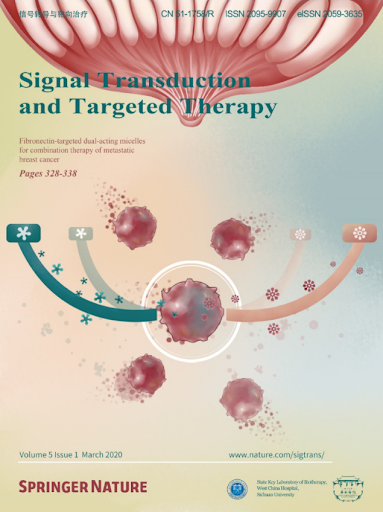A two-strata energy flux system driven by a stress hormone prioritizes cardiac energetics.
IF 52.7
1区 医学
Q1 BIOCHEMISTRY & MOLECULAR BIOLOGY
引用次数: 0
Abstract
The heart, an organ with a continuously high demand for energy, inherently lacks substantial reserves. The precise mechanisms that prioritize energy allocation to cardiac mitochondria, ensuring steady-state ATP production amidst high-energy organs, remain poorly understood. Our study sheds light on this process by identifying a two-strata flux system driven by the starvation hormone FGF21. We demonstrate that systemic disruptions in interorgan metabolite mobilization and transcardiac flux, arising from either adipose lipolysis or hepatic ketogenesis due to FGF21 deficiency, directly impair cardiac energetic performance. Locally, this impairment is linked to compromised intracardiac utilization of various metabolites via ketolysis and oxidation pathways, along with hindered mitochondrial biogenesis, TCA cycle, ETC flow, and OXPHOS. Consequently, the heart shifts to a hypometabolic, glycolytic, and hypoenergy state, with a reduced capacity to cope with physiological stressors such as fasting, starvation, strenuous exercise, endurance training, and cold exposure, leading to a diminished heart rate, contractility, and hemodynamic stability. Pharmacological or genetic restoration of FGF21 ameliorates these defects, reenergizing stress-exhausted hearts. This hierarchical energy-prioritizing mechanism is orchestrated by the LKB1-AMPK-mTOR energy stress response pathways. Disrupting cardiac LKB1 or mTOR pathways, akin to stalling mitochondrial energy conduits, obstructs the FGF21-governed cardiac energetic potential. Our findings reveal an essential two-strata energy flux system critical for cardiac energetic efficiency regulated by FGF21, which spatiotemporally optimizes interorgan and transcardiac metabolite flux and intracardiac mitochondrial energy sufficiency. This discovery informs the design of strategies for treating cardiac diseases linked to mitochondrial or energy deficiencies.由应激激素驱动的两层能量流系统优先考虑心脏能量。
心脏是一个持续需要大量能量的器官,天生就缺乏大量的储备。将能量优先分配给心脏线粒体,确保高能器官中稳态ATP产生的确切机制仍然知之甚少。我们的研究通过确定由饥饿激素FGF21驱动的两层通量系统来阐明这一过程。我们证明,由于FGF21缺乏引起的脂肪脂解或肝脏生酮引起的器官间代谢物动员和经心通量的全身性中断,直接损害心脏的能量表现。在局部,这种损害与通过酮解和氧化途径抑制心内各种代谢物的利用,以及线粒体生物发生、TCA循环、ETC流动和OXPHOS受阻有关。因此,心脏转变为低代谢、糖酵解和低能量状态,应对生理应激源(如禁食、饥饿、剧烈运动、耐力训练和寒冷暴露)的能力下降,导致心率、收缩力和血流动力学稳定性降低。FGF21的药理学或基因修复改善了这些缺陷,使压力耗尽的心脏重新充满活力。这种分层的能量优先机制是由LKB1-AMPK-mTOR能量应激反应途径协调的。破坏心脏LKB1或mTOR通路,类似于停止线粒体能量通道,会阻碍fgf21控制的心脏能量电位。我们的研究结果揭示了FGF21调节心脏能量效率的重要两层能量流系统,该系统在时空上优化了器官间和心内代谢物通量以及心内线粒体能量充足率。这一发现为治疗与线粒体或能量缺乏有关的心脏病的策略设计提供了信息。
本文章由计算机程序翻译,如有差异,请以英文原文为准。
求助全文
约1分钟内获得全文
求助全文
来源期刊

Signal Transduction and Targeted Therapy
Biochemistry, Genetics and Molecular Biology-Genetics
CiteScore
44.50
自引率
1.50%
发文量
384
审稿时长
5 weeks
期刊介绍:
Signal Transduction and Targeted Therapy is an open access journal that focuses on timely publication of cutting-edge discoveries and advancements in basic science and clinical research related to signal transduction and targeted therapy.
Scope: The journal covers research on major human diseases, including, but not limited to:
Cancer,Cardiovascular diseases,Autoimmune diseases,Nervous system diseases.
 求助内容:
求助内容: 应助结果提醒方式:
应助结果提醒方式:


